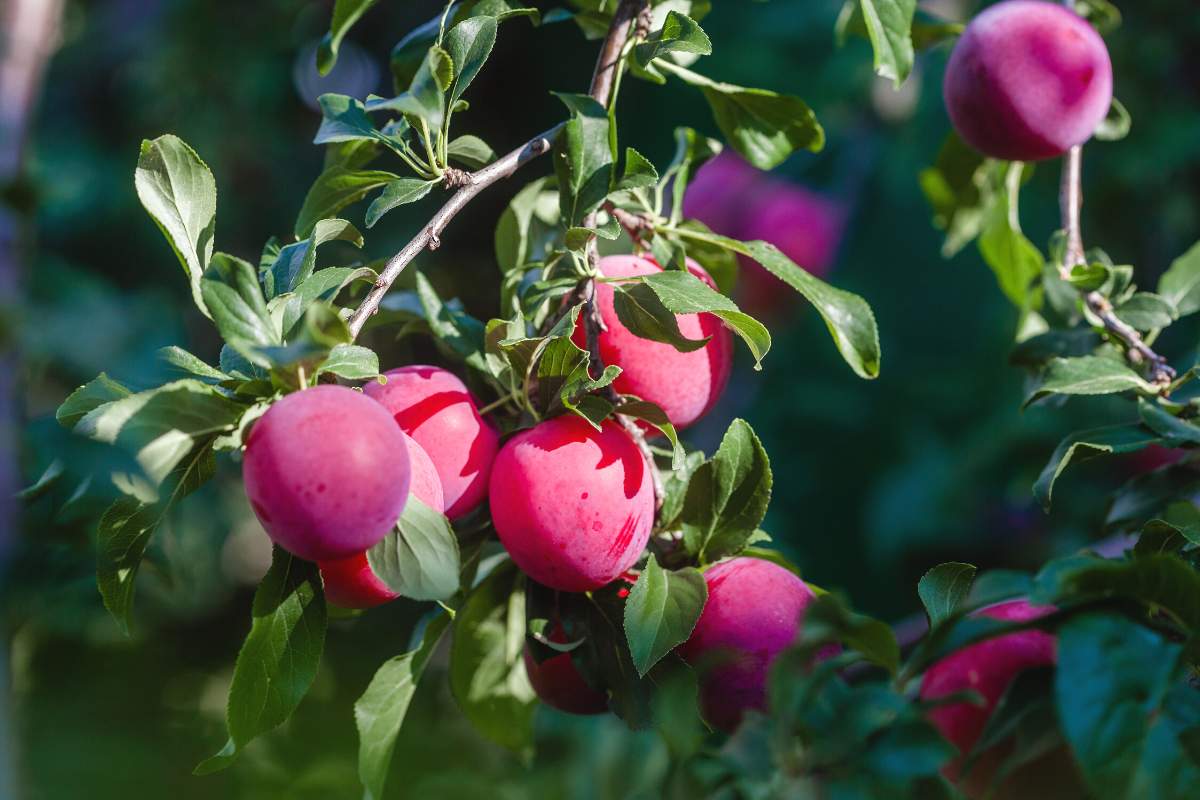Zone 4 is a fairly large plant hardiness zones that spans across much of the Northern United States. Here, temperatures in the winter can sink to around -30 to -20F. Areas with this climate zone include the Mountain West, the northern Midwest, and the northern Northeast.
Despite having such harsh temperatures in the winter, this climate zone still has plenty of options for growing fruit trees in your own backyard. This article will give you an overview of some of the best fruit trees to grow in zone 4. Before we learn about these fruit trees, check out the following map of the USDA planting hardiness zones. You can tell what zone you’re in on the map by checking the color of the band.
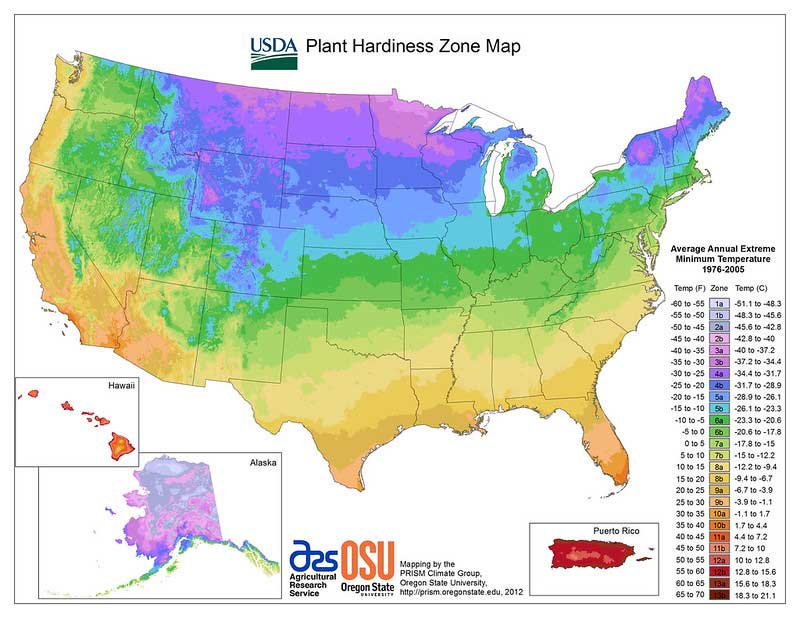
10 Trees for Zone 4
1. Apples
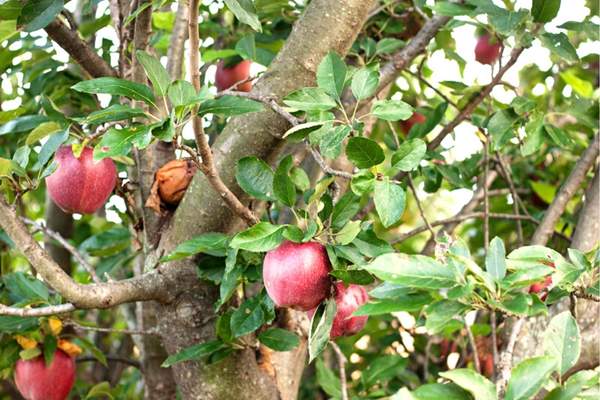
Scientific name: Malus spp.
Apples are a perennial favorite among fruit trees. They may be the most popular fruit tree in all of the northern United States. These adaptable trees can grow in the mountains, plains, and coastal areas of most of the country, providing conditions offer sufficient chilling time in the winter months.
When growing apple trees, plant at least two near each other. They need to be close by in order to ensure cross pollination.
Some apples that grow well in zone 4 are Baldwins, Canadian Strawberries, and Pink Duke. Apples in this region ripen in various seasons, including summer, fall, and winter.
2. Pears
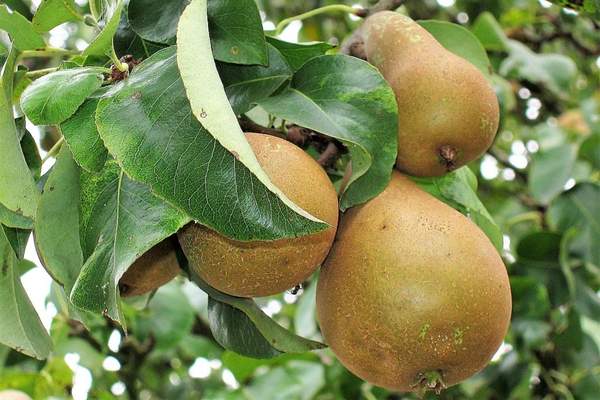
Scientific name: Pyrus communis
Pears are another species of tree traditionally grown in the northern forests and plains of the United States. They adapt well to rocky soil and grow between 25 and 40 feet tall. Plant them adjacent to each other to ensure pollination or see if there’s one in the backyard next to yours.
They do best if they’re away from cold winds. Unlike apples, many go bad rapidly after ripening. It’s important to pick them as soon as they ripen to ensure that they can be preserved.
An excellent Asian Pear variety is the Juicy Jewel, which is well-adapted to zone 4. They’re resistant to Fireblight and are best when eaten fresh. The Golden Spice pear is a flavorful option of European pear.
3. Peaches
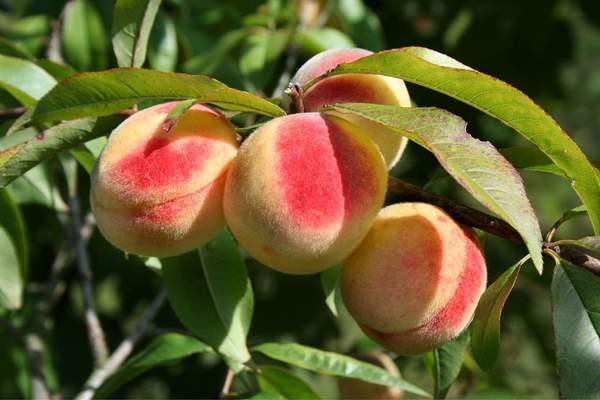
Scientific name: Prunus persica
Peaches are naturally adapted to warm weather more than apples and pears. Most peaches can’t survive in the cold winter temperatures of zone 4 climates. However, there is one variety bred to make it through winters of up to -40F – the Contender peach.
This fruit is self-pollinating, so you won’t have to worry about planting two. Locate it in full sun, and it will grow up to 20 feet tall.
They do better in elevated areas with well-draining soils. Make sure that water doesn’t pool near the roots; that’s a death sentence for a peach tree.
4. Cherries
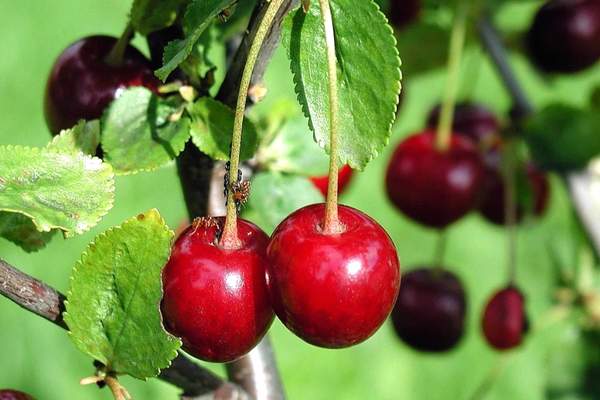
Scientific name: Prunus avium
There are two kinds of cherries: sour and sweet. The sweet cherries grow more in warmer weather, while more types of sour cherries are adapted to colder climate zones. Don’t worry, however – there are plenty of both types that grow in zone 4.
The Black Gold Cherry is a great option for zone 4. It’s great to eat fresh and make into preserves. On the tree, the flowers bloom later than other varieties of cherry in order to avoid frosts late in the spring.
If you want a sour cherry, the Danube is a great self-fertile option that easily adapts to sub-zero temperatures.
5. Persimmons
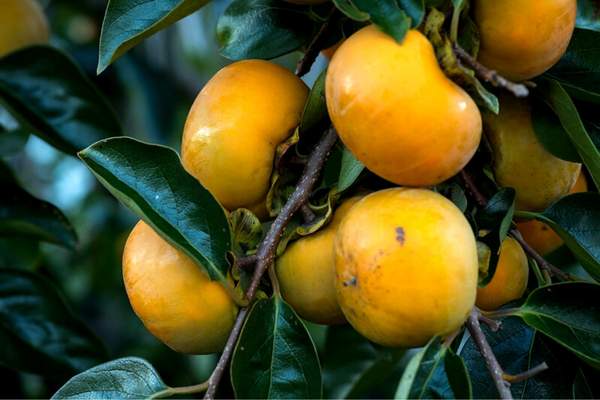
Scientific name: Diospyros virginiana
Persimmons are a great option if you want to revisit some of the old recipes and folklore of early America. They are fast-growing, low-maintenance trees which used to grow wild throughout the United States. Some grow as tall as 50 feet!
When choosing a persimmon for your backyard, make sure to buy a young one from a nursery instead of uprooting one from the wild. They rely on a significant tap root to become established.
Also remember to plant a male and female; they are not self-pollinating. The best variety of persimmon for zone 4 is the Meade type.
6. Plums
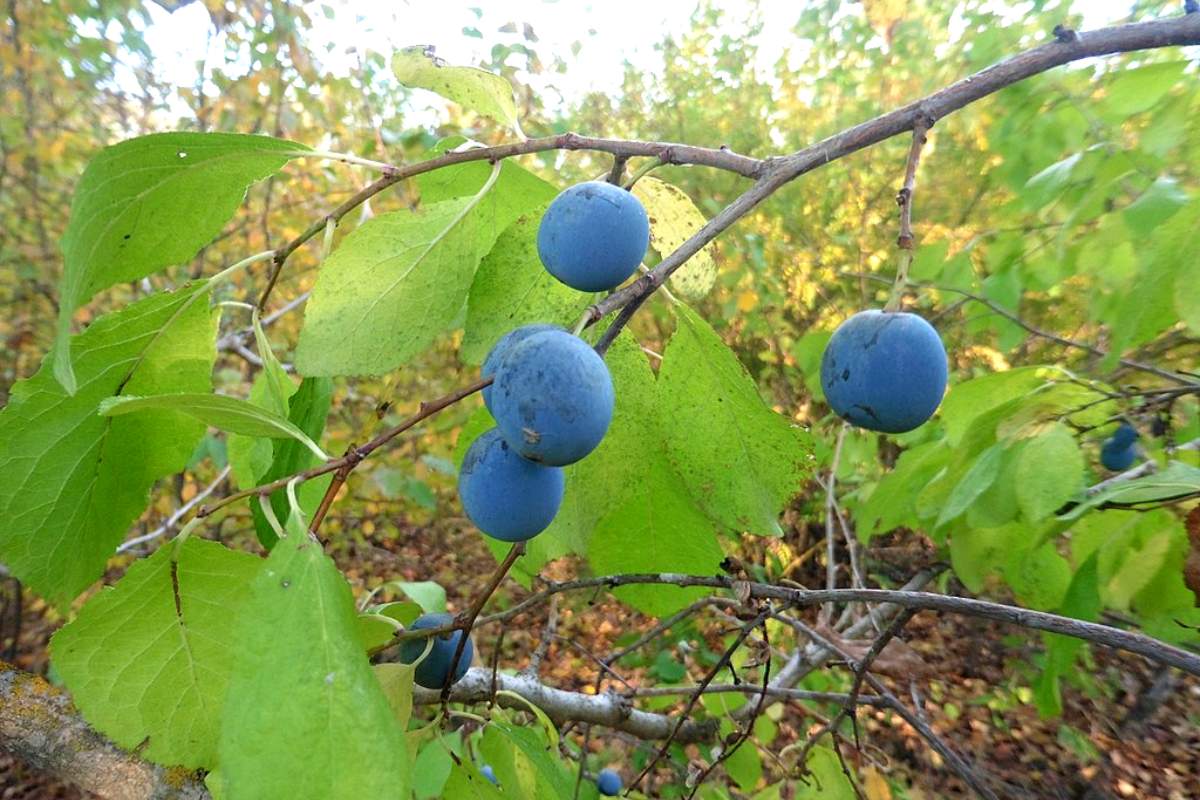
Scientific name: Prunus domestica
The prime location to grow plums is in USDA growing zone 4, but the tree can thrive in zones 4 through 8. Most grow to be about 20 feet tall. Remember to plant two or more plums to ensure cross-pollination.
It’s a good idea to plant up to 4 different varieties because it will maximize the amount of fruit that is produced. Beach plums are good for zone 4.
While small, they are hardy for negative temperatures and can handle poor soils. A larger, more tree-habit plum is the Hybrid Lavinia type, or the European Stanley.
7. Apricots
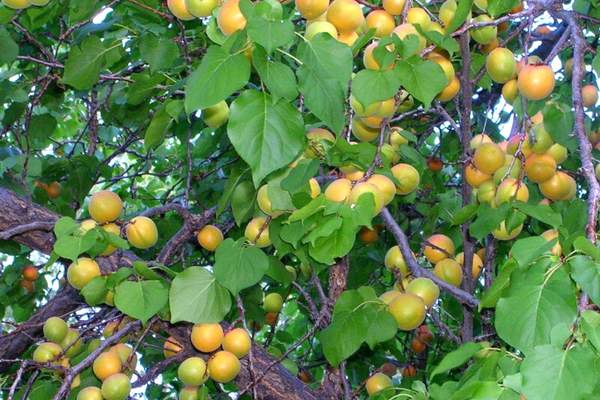
Scientific name: Prunus armeniaca
Goldcot apricots are a good choice for the zone 4 backyard. Plant this tree in areas with all-day sunlight, well-drained soil, and abundant water. It doesn’t need to be pruned, but it won’t start producing fruit until it is at least three years old.
While apricots can self-pollinate, they bloom early in the spring when there aren’t many insects around. You can either plant another apricot to help the tree cross-pollinate or pollinate the tree yourself with a paintbrush and a hose.
8. Mulberry
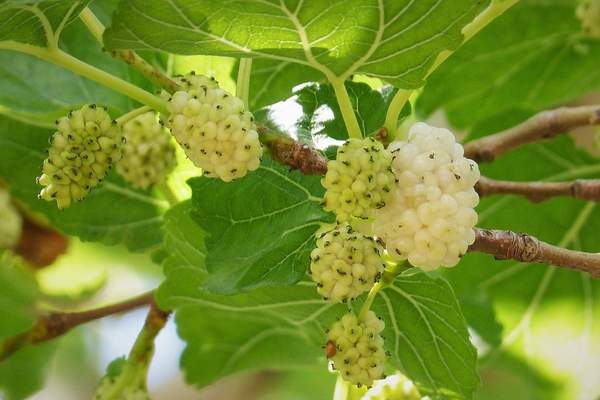
Scientific name: Morus alba
Mulberries are more commonly known in Europe and the British Isles, but they are also plentiful in the United States. A mulberry tree is a great option for those who want berry-like fruit that works well as preserves, sauces, jams, and jellies.
They produce fruit late in the summer or in early fall, and they can grow over 30 feet tall. Plant them in high-quality soil with good drainage. They prefer full sun.
9. Kiwi
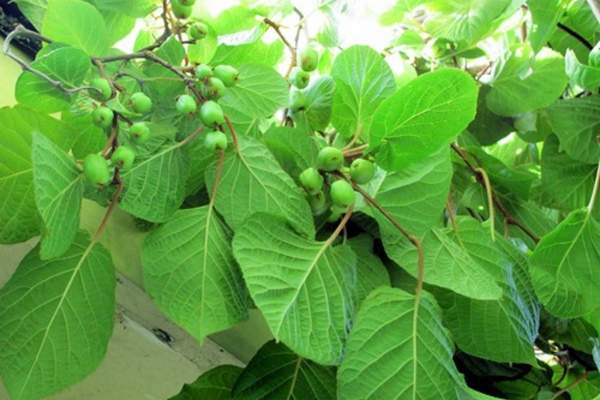
Scientific name: Actinidia arguta
Most grocery store kiwis are varieties grown in zone 8 and 9. These semi-tropical vines won’t survive in northern climates with zone 4 freezing temperatures. However, there are cold-adapted types of kiwi that you can grow in your own backyard.
Hardy kiwis are not like fuzzy kiwis, but they have a similar fruity taste and are also nutritious. They are normally vines in the wild, but they can be trellised and grown into tree-like shapes.
Always plant at least one male for every few females! They prefer sunny environments, loam, and regular watering.
10. Crabapples
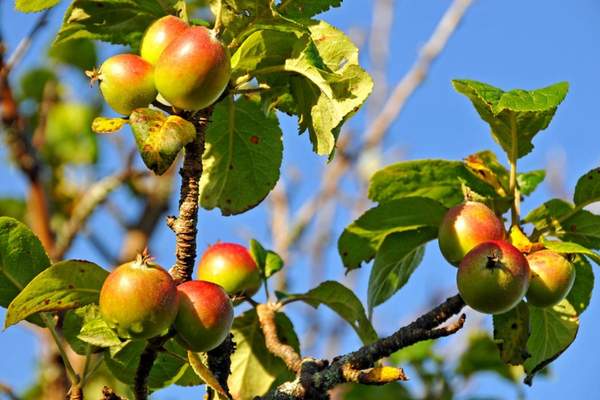
Scientific name: Malus spp.
Crabapples are one of the best fruiting trees to grow in zone 4 environments. Their vibrant white or pink blooms, ease of tending, and usability in multiple types of foods and beverages make them a great choice for the backyard gardener.
Plant your crabapple trees during late spring – mid-May is a good time in zone 4. They don’t need to be pruned as often as apple trees and they produce many small fruits, as opposed to fewer but larger fruits.
They require slightly acidic, well-drained soil and they adapt to life in orchards as well as living fences and yard screening barriers.
